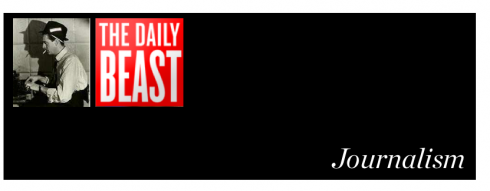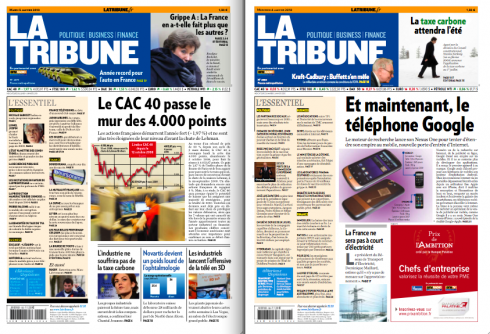TAKEAWAY: Yesterday’s blog was devoted to defining the word journalism in the new environment of a multi-platform world. Today we amplify on the subject. ALSO: For France’s La Tribune, smaller means better, and the readers approve.
Dr. Roy Peter Clark discusses journalism

As I embarked into this mission of attempting to define the term journalism, I knew that I could count on my Poynter Institute colleague, Dr. Roy Peter Clark, to shed some light on the subject. He was helpful, as always, and has sent me this mail today, which I share with you.
According to Roy, Stuart Adam, journalism scholar, has done the best work on trying to define journalism and to set it within its social and cultural framework. In Roy’s own words:
Much of this is what I learned from him:
1) The act of journalism involves the practice of finding things out, and checking things out.
2) Journalism is a discipline of discovery and verification, not assertion.
3) Journalism can be expressed in many different forms, and not just by professionals.
4) Journalism helps the public figure out what matters.
Measuring toold for journaiists
A second topic we covered in yesterday’s blog was a discussion of tools available to evaluate performance by journalists in the newsroom.
Roy had some contributions in this area as well.
Roy reminds me that the Poynter Institute compiled a list of the competencies and capacities that should reside in individual journalists and/or news organizations. “We called it the pyramid of competency,” he writes.
At the bottom were the foundational stones:
News Judgment, Language and Narrative, Analysis, Reporting and Evidence
Then came: Technological understanding, Visual Literacy, Numeracy
Then came: Civic understanding, Cultural Literacy
According to Roy, the definitions that appear here are all derived from when Stuart Adam was asked to help judge a journalism contest. His problem was that the contest offered general criteria, so Stuart designed his own grading grid: He would grade each story on 1) to what extend the story mattered—news judgment; 2) the level of reporting and quality of the evidence; 3) language use and narrative strategy; 4) the intelligence and insight supporting the analysis.
La Tribune: smaller is better

It’s a new year and for France’s financial daily, La Tribune, a new format.
Or is it?
La Tribune had converted to a Berliner format (from tabloid) in 2008, and we were there to assist with the change. Now, for economic reasons, La Tribune’s management decided to switch back to tabloid format, which they did just a few days ago. Again, we at Garcia Media assisted with the adopting of the smaller format (which did not involve dramatic design changes, only adjustments).
I was curious to see how readers would react, as I had never heard of a newspaper changing formats so quickly in succession, and even less so, a Berliner becoming a tab.
General Manager Valerie Decamp reports that readers have embraced the new, smaller format. “Some tell us that they, indeed, like it better,” says Valerie.
As I told Valerie, it gets smaller and smaller. Next disussion: the Apple tablet, perhaps.
TheMarioBlog post #449